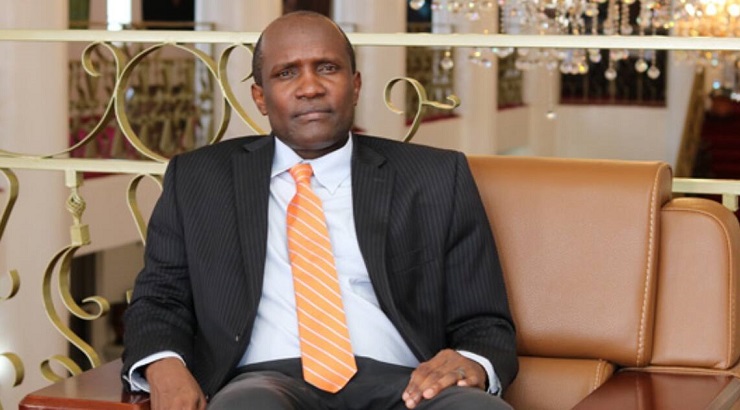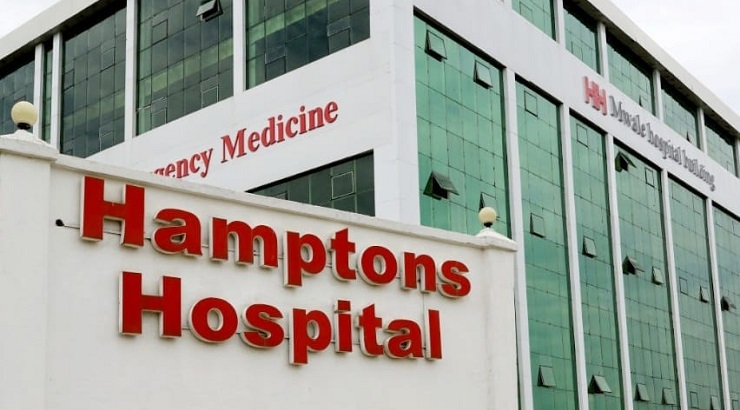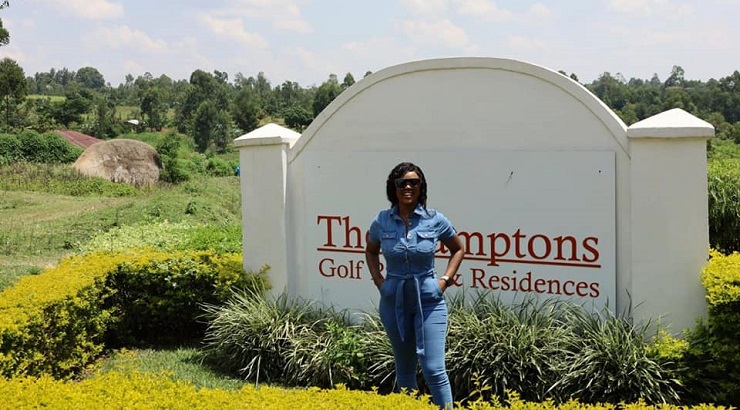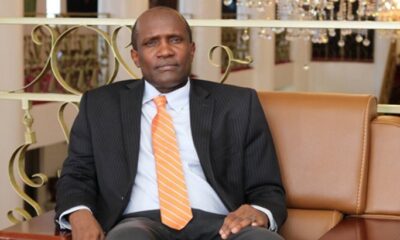Executives
The Inside Story of Sh250bn Mwale Medical City
Mwale Medical and Technology City is located in Butere, Kakamega County.

Tucked away in the heart of Kakamega County, within Butere Constituency, the newly built Mwale Medical and Technology City feels like a Kenyan dream.
An area of outstanding beauty, the community-owned metropolis’ white signature buildings stand out against the green farmlands and forests around it.
The city, which is built on a 100% green concept, has attracted global attention as a prototype of smart city while transforming a little-known village into a medical tourism hub.
Mwale Medical and Technology City is the brainchild of New York-based Kenyan techie Julius Mwale – who is also the President and CEO of SBA Technologies Inc.
Julius Mwale biography
Born in 1976, Mwale attended a local primary school in Lunza village, Butere, before joining Mukumu Boys for his secondary education.
After high school, he pursued a diploma in telecommunications engineering.
In 1994, Mwale joined the Kenya Airforce as a soldier. During his stint as a military officer, he majored in technology research and internet infrastructure.
His love for technology would later force him to flee the country after an altercation with authorities over some intellectual property rights.
“I left for the USA in 2000. I went to look for asylum because there was a misunderstanding with the technology I had created. I wanted to protect my own identity and the technology that I had,” Mwale said in an interview.
He first went to Uganda where he spent 6 months trying to get asylum.
When fears for his life became unbearable, Mwale fled to Zimbabwe where he spent 9 months trying to convince the UN Refugee Agency to get him local asylum.
The agency later referred him to the US where he was offered asylum.
However, he spent one year at a homeless shelter as he awaited his asylum paperwork to be completed. Mwale likened the home shelter to a jail.
“The homeless shelter is halfway off the people coming from jail; you meet people that are not mainstream people in the society, but my focus was to work on my technology – the environment wasn’t very important,” he said.
After the September 11, 2001 terrorist attack that shook the US banking networks, Mwale begun toying with an idea that would later transform his life.
“9/11 happened when I was at the shelter and an idea came to me that I could create a technology that could protect the banking networks from terrorist attacks…This technology changed my life,” Mwale said in an interview.
To push this idea, he formed SBA Technologies Inc. in 2003. He relied on the company to market his two-factor authentication technology.
“I went to the local authority (in New York) … and I said, ‘hey can we propose a two-factor authentication for banks so that there is a username, password, and another level like a token or picture?’,” he said, adding that his level was biometric.
The Congress put up that law in 2004, and it went into effect in 2006.
“My technology became the go-to tech for big banks – Bank of New York, JP Morgan, Bank of America – and that’s how I got money and became very successful,” he said.
Julius Mwale patent
In 2005, SBA Technologies Inc. received a patent, and the technology was extended to universities and other organizations that used his patents to develop biometrics – a technology that is now used worldwide.
Mwale Medical and Technology City
Armed with loads of money, Julius Mwale embarked on a mission to transform his village into a medical tourism hub that centres around Mwale Hamptons Hospital.
“We started with a feasibility study in 2007-2012. It took five years and we spent $4 million (about Sh500 million). We found that over 180,000 people in East Africa go to India for treatment and so we decided, ‘why can’t we capture that market by putting up a medical city that has an innovation park?’,” said Mwale, who is a brother of Butere MP Tindi Mwale.

He acquired 5,000 acres that were previously a sugarcane plantation for a local factory that had collapsed. He then reached out to farmers inviting them to partner with him on the now 25,000-acre community-owned metropolis.
“The farmers in this area had no economic activity. We told them, look, you can come and partner with us. If you have one acre of land, we can build you four rental units, and we’ll put our workers in them, and then we’ll upgrade your house into a modern home,” Mwale said.
More than 700 farmers have so far taken up the offer.
The three-phase project finally took off in 2014. Phase one of the Mwale Medical and Technology City involved construction of Hamptons Mall and a residential complex.
The mall hosts Mwal-mart supermarket, Hamptons Café bed & breakfast, a showroom, and over 90,000 square feet of private residences.
Mwale Hamptons Hospital
The second phase of the project, which was done between June 2016 and September 2017, covered the first section of the 5,000-bed Mwale Hamptons Hospital, more than 70km of roads, and over 300 street lights.
It also covers phase one of 4,800 homes expected to host doctors and nurses.
The third phase of the project, which commenced in September 2017, includes an airport, a 36-hole golf resort and residences, a second mall, a convention centre, and a water park connected to the hospital by a cable car.
It will also include a medical school, a technology park, and a 144 MW gasification power plant.
The cost of the MMTC is estimated at $2 billion (about Sh250 billion).
“We are building an airport. It is going to be one of the biggest airports in the country – bigger than Kisumu International Airport. We are going to have people flying in directly for treatment at the hospital,” Mwale said.
The first aircraft is expected to land in March 2023.
“There will be a solar-powered cable car to take people all the way to the hospital,” he added.
MMTC is segmented into five districts; plaza, industrial, golf, grid, and airport.
Plaza district
Plaza district is centred around Hamptons Hospital, a research and innovation park, and commercial centres with a shopping mall and residences.
Hamptons Hospital opened its doors in July 2019 with a cancer treatment centre and has gradually opened other departments.
The facility is expanding with the introduction of a Hamptons floating hospital that seeks to serve communities living along the shores of Lake Victoria.
Industrial district
The industrial district is anchored by a 10MW solar plant that powers the city. The district spans four kilometres and is served by two main arterial roads; the Power Plant Road and a by-pass connected by a boulevard.
Thanks to its focus on sustainable development, MMTC has attracted major investors such as the Miami-based Innova Eco Building System which invested US$40 million in 2019 to build a green eco panels production plant at the city.
The panels will be used for construction of 4,800 homes. Most of these houses have already been purchased off-plan by investors from the US and elsewhere.
Like other facilities within the MMTC, the homes will be fully powered using solar.
Atlanta-based MCX Environmental Energy Corp has invested US$100 million to build a 30MW solar power plant at MMTC to complement the city’s solar plant.
READ: Inside Kenya’s Small-Scale Solar Energy Revolution
Golf district
This is the main residential district of the city. It comprises a 36-hole Hamptons Golf Course that runs along the 9km Golf and Church roads.
The district starts at Lunza School then crosses the Hamptons Boulevard to the north and turns North west after School Road at St. Michael School Muluwa.

A majority of residents in the golf district are local partners of the project.
Grid district
The grid district runs 6km along the boulevard starting at the 1st street to the 12th street. Unlike the plaza district, grid district is zoned for low density housing and does not contain any high-rise structures.
Airport district
The airport district runs on four main routes with the terminal area located next to School Road near Khushibiriri.
The 5km Station Road comprises a ramp for the planned cable car station that will ferry visitors and medical tourists from the airport to the hospital.
Akoin cryptocurrency
In April 2020, Akoin, a cryptocurrency backed by singer Akon, signed a deal with Mwale Medical and Technology City to process all digital payment transactions within the city at no charges.
Biggest challenge
Putting up a project of this magnitude comes with many challenges.
For Julius Mwale, acquiring land for the project was a major challenge as his proposal to partner with local farmers was opposed by some people who claimed the investor was out to con people out of their land.
“The biggest challenge is land. To build a city you need land; and to be able to work with the community and getting them to agree to provide land for the city was the biggest challenge because it was bringing political challenge,” he said.
RELATED: Moderna Halts Plans for Sh62bn Kenya Vaccine Factory
With the MMTC now up and running, Mwale has set his sight on the rest of Africa. Plans are already underway to build similar projects in Ghana, Sierra Leon, Sudan, Uganda, among other African countries.
Julius Mwale net worth
Julius Mwale invention earned him a huge amount of money – enough to acquire a private jet, and a home in New York – but he declines to disclose his net worth.
“I am a billionaire of ideas. My net worth is how many people I am pulling out of poverty,” he says, adding that his desire is to transform Africa and to put 800 million people in the middle class by 2050.
Julius Mwale wife
Is Julius Mwale married? Yes. Julius Mwale has a wife – Kaila Ek Mwale – whom he married in 2008. The two have been blessed with three boys and two girls.












